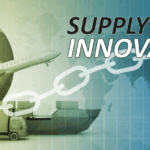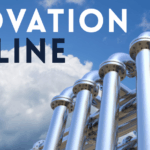[vc_row][vc_column][vc_column_text css=””]
Innovation Through Competition: Effective Innovation Systems Encourage Ideation
Whether the focus is on product development, service delivery, customer satisfaction, or market share capture, competition drives a company to improve its performance. Taking this to the next level, effective competitive systems encourage outstanding innovation, by allowing the best and brightest to tackle an organization’s biggest challenges.
Internal Competitions
Creating an internal competition is an excellent way to motivate your workforce to develop innovative solutions and new business opportunities. The most common structure is to form teams which compete to develop concepts, often working with mentors who provide guidance as needed.
To maximize the impact of these competitions, consider leveraging your company’s deep well of resources—everything from proprietary data and research archives to internal process documentation. Giving participants access to such materials not only sparks creativity but also ensures that submissions are grounded in the organization’s existing strengths.
Just as crucial is tapping into your company’s best resource: its people. Enhance the competition experience by offering internal classes, tutorials, or even executive mentoring. Facilitators, coaches, and subject matter experts can provide valuable feedback and insights, helping teams sharpen their ideas and develop robust concept plans. This approach not only supports the contestants but also fosters cross-departmental collaboration and knowledge sharing, turning the competition into an organization-wide learning opportunity. The teams present their projects to a panel of judges who select the best innovations for implementation. This process has the advantages of:
- Encouraging teamwork;
- Demonstrating trust in internal expertise; and
- Developing pathways for employees to participate in innovation regardless of job title or department.
- But the true value of these internal competitions often extends beyond the immediate results.
- Even if a contest doesn’t lead to a breakthrough idea right away, it still brings lasting benefits to the organization. Well-designed innovation challenges teach employees new skills, foster unexpected connections across departments, and help build a culture where creativity thrives.
With each competition, teams gain experience, gather insights, and refine their approach for the next round. Over time, the process itself becomes just as valuable as the outcome, empowering people to take risks, collaborate more openly, and contribute ideas that might not have emerged otherwise.
Well-managed internal competitions also teach employees new skills, connect them across multiple departments, and amplify the company’s overall creative environment. Organizations frequently find that after running a single competition, they gather important data and ideas to refine future contests. Over time, this iterative process helps companies not only surface great ideas but also learn to give their teams the freedom to take risks—ultimately cultivating a culture where innovation thrives across all levels.
Leveraging Internal Knowledge and Resources
For organizations eager to make the most of their innovation competitions, tapping into internal assets can be a game changer. Companies naturally build vast reservoirs of data, expertise, and institutional know-how over time. By opening up these resources to competition participants, you empower teams to create more impactful, relevant solutions.
- Access to Internal Resources: Give teams permission to mine company archives, reports, and proprietary materials. This could include everything from detailed market research and engineering blueprints to technology roadmaps and historical data. When participants can draw from these informational goldmines, their proposals tend to become sharper and more actionable.
- Mentoring and Guided Support: Beyond data, people are a company’s most valuable resource. Encourage employees—especially subject matter experts and executives—to serve as mentors, coaches, or workshop leaders for participating teams. Consider offering targeted tutorials, hands-on sessions, or even executive office hours, so that contestants can benefit from real-world feedback and guidance as their ideas evolve.
- Collaborative Workshops: Structured workshops, led by experienced facilitators, can help interdisciplinary groups to cross-pollinate ideas and move beyond departmental silos. This not only strengthens the quality of submissions but also fosters a broader culture of innovation throughout the organization.
By blending the best of its collective knowledge and providing access to experienced mentors, a company can turn internal competitions into true incubators of breakthrough thinking.
The significant downside of this process is that it keeps innovation solely as an organizational process, which limits a company’s ability to develop a network of global contributors, which leads to improved market response.
External and Open Competitions
External competitions invite outside innovators to present their solutions to a given problem. Open competitions allow for both internal and external concept submissions. When external submissions are accepted, it is critical that the organization have an intellectual property protection system in place. This should be part of a comprehensive open innovation program that is supported by effective tools to manage the process from scouting through resolution.
External and open competitions give organizations the ability to
- Identify a broader range of solutions;
- Expand partnership opportunities with outside innovators; and
- Improve market responsiveness.
For companies supported by open innovation management technology, there is no downside to deploying an external competition.
Examples of Successful Innovation Competitions
Several leading organizations and platforms have harnessed the power of competition to spark breakthrough ideas and creative solutions. In the corporate world, major players like AT&T and American Express frequently launch online contests to gather fresh perspectives directly from their customer base, actively seeking out the next big idea through incentivized challenges.
Crowdfunding platforms such as Kickstarter have also embraced competition by allowing inventors and entrepreneurs to showcase their projects in a highly visible arena, where only the most compelling ideas win the financial backing they need to move forward. This model has not only fueled countless startups but has also fostered an environment where only the most innovative concepts rise to the top.
Internally, companies often set up competitive funding opportunities, inviting employee teams to pitch proposals to decision-makers in pursuit of resources for development. This approach mirrors popular entrepreneurial programs and reality shows, motivating employees to collaborate, advocate for their solutions, and contribute to a culture of ongoing innovation.
By adopting these varied competition formats—whether consumer-driven, open to the public, or focused within the workplace—organizations are able to access a diverse pool of creativity while energizing both their teams and their external communities.
Elements of a Successful Competition
A successful internal, external, or open competition requires thought and planning. Be sure to:
- Identify a specific need or problem to be solved. Broad statements of need will result in ambiguous results. Be specific about what you want to accomplish, but give participants room to innovate. For example, instead of a vague challenge like “Design the next big thing,” craft a focused problem statement that clearly outlines the objectives and criteria. Consider the XPRIZE Foundation’s famed spaceflight challenge, which offered $10 million to the team first able to meet a very specific set of criteria: “Build a reliable, reusable, privately-financed, manned spaceship capable of carrying three people to 100 kilometers above the Earth’s surface twice within two weeks.” This level of specificity gave teams a tangible goal to work toward, reducing ambiguity and fostering targeted, innovative solutions.
- Set a specific timeframe. This can be two months, six months, or more, depending on the complexity of your problem. An open timeframe is only practical when you want to innovate a disruptive technology, rather than solve a specific challenge. Having a clear deadline helps teams focus their efforts and plan their approach.
- Establish the evaluation criteria. This may include manufacturing requirements, the utilization of current capabilities, ensuring projects must project a specific ROI, or other measures or demands. Transparent and measurable criteria help participants understand how their solutions will be judged and what success looks like.
- Encourage participation. Generate excitement for the competition by using scouting software, social media, and other resources to attract participants. Share the benefits of entering submissions, which could go beyond a declared “winner,” especially for companies with gamification programs in place. The more participants understand the process and see value in contributing, the stronger the competition’s results will be.
By framing competitions around clearly defined needs, setting timeframes, providing transparent evaluation criteria, and actively encouraging engagement, organizations can maximize the creativity and practicality of the solutions they receive.
Break Challenges Into Manageable Steps
Dividing innovation challenges into clear, incremental steps makes the process more approachable for participants and increases engagement. Instead of overwhelming teams with large, complex tasks right from the start, providing a structured pathway—such as beginning with a concise idea summary before moving on to more detailed proposals—helps participants focus on one stage at a time.
This staged approach delivers several key benefits:
- Reduces entry barriers: By starting with small, manageable tasks, you encourage broader participation, even from those who may feel intimidated by lengthy or complex requirements.
- Enables faster feedback: Early-stage submissions can be quickly reviewed, so participants receive timely guidance and know whether their ideas align with the organization’s goals before investing further effort.
- Develops diverse skill sets: Layered steps such as pitching summaries, refining analyses, and preparing full proposals give participants opportunities to expand and strengthen a wide range of innovation skills.
Implementing a step-by-step framework doesn’t just streamline the process; it also fosters a supportive environment where both creativity and practical know-how can flourish. Participants learn, adapt, and iterate—resulting in higher-quality solutions and a more dynamic innovation culture.
Ezassi supports every type of competition with IP protections, scouting software, gamification processes, and more. Our Open Innovation Management Software Solution manages the entire workflow system, allowing you to maximize competition results. Request a demo or contact us to learn more.[/vc_column_text][vc_column_text css=””]
Learning from the Competition Process
It’s essential to recognize that the true power of innovation competitions lies in more than just selecting a winning idea. While every organization hopes for that breakthrough solution, the real value often emerges from the journey itself. Through the process, employees hone valuable new skills, establish cross-departmental connections, and experience firsthand what it means to collaborate creatively.
Just as importantly, each competition generates a wealth of data, feedback, and insights. These learnings—what worked, what didn’t, and where unexpected sparks flew—can shape your next contest, inform internal best practices, and even reveal untapped talent within your team. Companies that analyze these outcomes can steadily refine their approach, allowing innovation to take root and flourish over time.
By continually focusing on both the process and the results, organizations foster an environment where teams feel empowered to experiment, take calculated risks, and develop a culture of ongoing improvement. In this way, competitions become more than one-off events—they’re catalysts that drive organizational learning, adaptability, and sustained creative growth.[/vc_column_text][vc_column_text css=””]
Building on Experience: Improving Future Innovation Contests
Each time you run an innovation competition, you gain valuable insights for refining your approach next time around. Lessons learned—everything from what motivates teams, to how much freedom participants need, to which incentives spark the boldest ideas—quickly add up. Over time, organizations can use feedback and results from previous contests to fine-tune everything from the structure of the competition to the ways in which teams are supported.
For example, after seeing which support systems and mentorship models yield the greatest engagement, you can adjust processes to encourage even more creative and ambitious solutions. Patterns may emerge that highlight barriers or opportunities you hadn’t anticipated. Ultimately, with each subsequent competition, your organization becomes more adept at fostering a culture where daring ideas are welcomed and participants are empowered to take calculated risks—setting the stage for even higher-quality innovation outcomes.[/vc_column_text][/vc_column][/vc_row]






